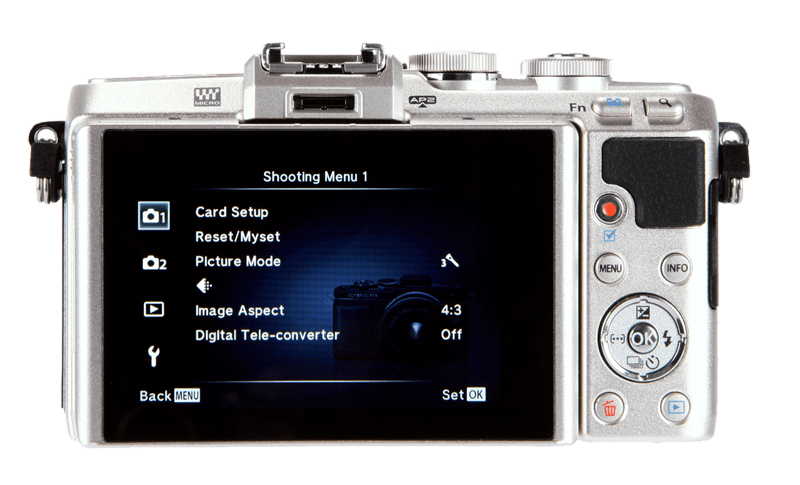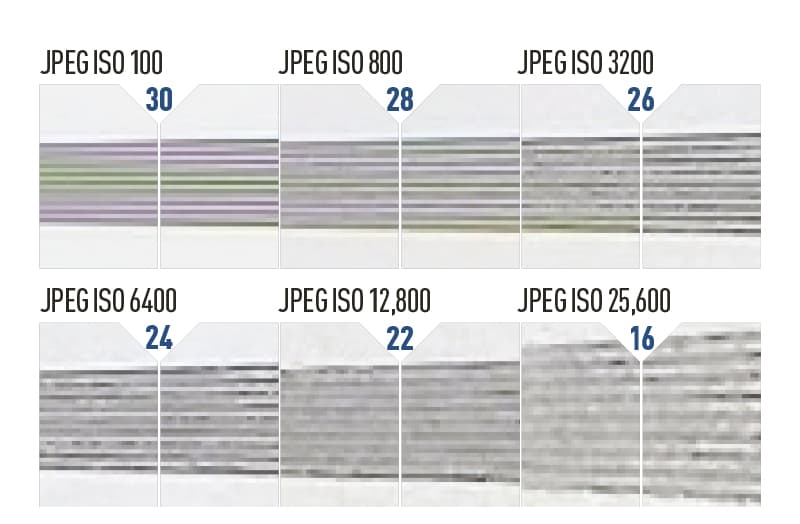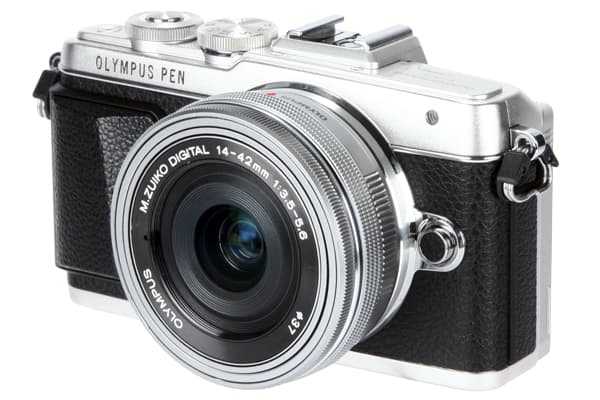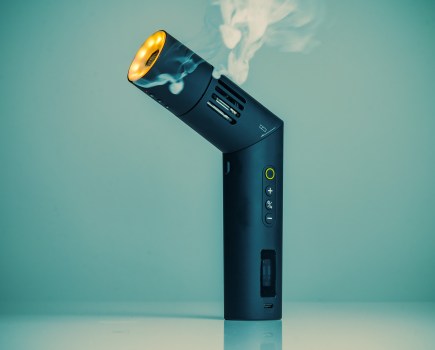Now in its sixth generation, this latest addition to the Pen ‘Lite’ family, the Olympus Pen E-PL7, continues Olympus efforts to reach out to those photographers who apparently appreciate the smaller, more refined design of the E-PL7’s rangefinder style, as opposed to the intentionally chunkier and retro (D)SLR-styled OM-D cameras that have pretty much stolen the show at Olympus in recent times.
This latest offering from Olympus features the 16.1-million-pixel sensor that has proved popular in the OM-D E-M5, but as well as the sensor, the E-PL7 shares many of the features of the OM-D E-M10, minus a viewfinder and built-in flash. Based on those features alone, if there are any enthusiasts in the market for a compact system camera but who as yet haven’t been tempted by the OM-D series, the E-PL7 may be precisely what they’re looking for.
Olympus Pen E-PL7 Review – Features
At first glance, the E-PL7 could be mistakenly written off as all style and no substance, described by Olympus itself as being wrapped in ‘an elegant skin’, and the very inclusion of its flip-out-and-under ‘selfie’ screen will undoubtedly turn off some photographers looking for something aesthetically befitting an enthusiast with more serious pursuits. However, this camera is powered by the current top-of-the-range TruePic VII image processor with Fine Detail II technology for Olympus lens-specific advanced aberration and distortion corrections, suggesting that its looks may very well be deceiving.
 In the absence of a built-in viewfinder and pop-up flash, the camera’s top-plate gains a control dial over its predecessor, the Olympus Pen E-PL7, which was only released in the UK this summer. There is also a hotshoe and accessory port to allow photographers to use the optional pop-up flash provided in the box, as well as other additional kit. Besides the inclusion of a physical control dial and processing unit, other feature improvements over the previous model include an 81-point contrast-detection AF system and a higher-resolution 3in, 1.04-million-dot capacitive LCD screen that is capable of being positioned in the optimum place for taking the best selfies ever, according to Olympus.
In the absence of a built-in viewfinder and pop-up flash, the camera’s top-plate gains a control dial over its predecessor, the Olympus Pen E-PL7, which was only released in the UK this summer. There is also a hotshoe and accessory port to allow photographers to use the optional pop-up flash provided in the box, as well as other additional kit. Besides the inclusion of a physical control dial and processing unit, other feature improvements over the previous model include an 81-point contrast-detection AF system and a higher-resolution 3in, 1.04-million-dot capacitive LCD screen that is capable of being positioned in the optimum place for taking the best selfies ever, according to Olympus.
The E-PL7 sports a full complement of manual and standard automatic modes as well as 25 scene modes and 14 art filters, a couple more than its older siblings. As seen on the E-PL6, its sensitivity range covers ISO 200-25,600, but an ISO Low (approximately ISO 100) setting in 1/3 or 1 EV steps is also available. For keeping up with fast-moving subjects, Olympus has made the E-PL7 capable of shooting 8 frames per second continuously, while three-axis image stabilisation will make it easier to capture steadier shots in low light as well as during video recording.
Olympus Pen E-PL7 Review – Build and Handling
Measures 114.9 x 67 x 38.4mm and weighing 357g, the E-PL7’s small frame is a mix of metal and plastic, with brushed metal and leather effect to convey a sense of quality. An ergonomic grip, consisting of a raised, contoured section of rubber that provides a perfect resting place for small fingers and a 1.5cm-long thumb rest on the rear, make the E-PL7 a reasonably comfortable camera to hold, although people with medium to large-sized hands may find the operating controls slightly cramped. The rear of the camera is also home to dedicated menu, movie record, delete and playback buttons, as well as a four-way selector with an OK/select button in the centre. All of these rear controls are designed for nimble fingers.
 The sprung mechanism of the camera’s LCD screen comes across as disjointed and overengineered, with Olympus having clearly spent a large amount of time trying to figure out how best to enable people to take selfies with a camera that’s overqualified for the task. The screen slips firmly into position when manoeuvred into one of its three shooting angles, but its design ultimately feels contrived and unnecessary. During my time with the camera, I took it to events and gave it to some attendees to take selfies and not once did they attempt to use the tilting screen, even when I showed them how it worked – they flipped it back in and didn’t seem to want to use it.
The sprung mechanism of the camera’s LCD screen comes across as disjointed and overengineered, with Olympus having clearly spent a large amount of time trying to figure out how best to enable people to take selfies with a camera that’s overqualified for the task. The screen slips firmly into position when manoeuvred into one of its three shooting angles, but its design ultimately feels contrived and unnecessary. During my time with the camera, I took it to events and gave it to some attendees to take selfies and not once did they attempt to use the tilting screen, even when I showed them how it worked – they flipped it back in and didn’t seem to want to use it.
When taking pictures with the E-PL7 in a typical shooting position, I noticed the absence of a viewfinder at first, but I got use to it eventually and found the ability to compose images at a low angle the most useful application of its tilting screen. The E-PL7 isn’t as easy to use when shooting in manual as I’d hoped, as it only has one control dial and the touchscreen isn’t activated for navigation. I was therefore restricted to using its miniscule button controls, often leading to me pressing the wrong commands when trying to make quick adjustments.
 For all of its ‘elegant design’, I feel like the best things about the E-PL7 are those elements that Olympus isn’t talking about in its marketing materials – such as its low-angle shooting capabilities, touch AF and shutter release, and its mostly solid metal frame, which feels like it could take a bashing, so long as the screen hasn’t been flipped out. Combined with its portable size, the E-PL7 should be a great pocket companion for travelling and everyday shooting.
For all of its ‘elegant design’, I feel like the best things about the E-PL7 are those elements that Olympus isn’t talking about in its marketing materials – such as its low-angle shooting capabilities, touch AF and shutter release, and its mostly solid metal frame, which feels like it could take a bashing, so long as the screen hasn’t been flipped out. Combined with its portable size, the E-PL7 should be a great pocket companion for travelling and everyday shooting.
Olympus Pen E-PL7 Review – Performance
 I reviewed the Olympus OM-D E-M10 in March and considering the similarities between that camera and this, I was expecting the E-PL7 to perform well and I was pleased with it overall.
I reviewed the Olympus OM-D E-M10 in March and considering the similarities between that camera and this, I was expecting the E-PL7 to perform well and I was pleased with it overall.
The camera’s 81-point contrast-detection AF system doesn’t hunt much for focus, but it does have a slight tendency to capture some out-of-focus shots for no obvious reason. Despite locking as though it were focused, it seems so eager to fire that it jumps the gun on occasion. This meant that I sometimes had to take a couple of security frames to ensure that I had the shot. In low light, the AF-assist beam does a decent job of finding the correct subject and locking on, and if I used touch AF results were quicker still, as well as being more consistent than half-pressing the shutter.
 I forced the E-PL7’s 324-zone multi-pattern metering system to work in some difficult scenarios and was impressed by its ability to produce faithful colours and well-balanced exposures. Spot metering linked to the AF works well also, especially with the touch AF ability. Results were a little less consistent when using the removable flash that comes in the box, as it overexposed subjects intermittently, but when it metered correctly I was pleased with the results and would happily use the flash in low light scenarios, such as for taking a picture of a group of people 1-2 metres away from me.
I forced the E-PL7’s 324-zone multi-pattern metering system to work in some difficult scenarios and was impressed by its ability to produce faithful colours and well-balanced exposures. Spot metering linked to the AF works well also, especially with the touch AF ability. Results were a little less consistent when using the removable flash that comes in the box, as it overexposed subjects intermittently, but when it metered correctly I was pleased with the results and would happily use the flash in low light scenarios, such as for taking a picture of a group of people 1-2 metres away from me.
Looking closely at images straight out of the camera, I was a little put off by the aggressive noise reduction, but you can get better results if you shoot raw and make your own noise reduction and sharpening adjustments in post-production. In good and in low light, the E-PL7 performed as I’d expected and surprised a few of the people that I showed its images to.

Finally, the battery is CIPA rated to 350 images, 30 more than the E-M10, and I found it delivered close to its rating before running completely empty. When I was using the flash, however, the camera’s battery depleted noticeably faster and gave me closer to 250 images, or about 4-5 hours of frequent use.
Olympus Pen E-PL7 Review – Image Quality
Resolution
 When set to it lowest ISO, the E-PL7 resolves around 3000l/ph. This is quite a high result for its 16-million-pixel sensor, suggesting a relatively weak optical low-pass filter. Detail levels drop as the sensitivity is increased due to the effects of noise and noise reduction, through around 2800l/ph at ISO 800 to 2600l/ph at ISO 3200. At higher sensitivities detail suffers dramatically, and at ISO 25600 we measure only around 1600 l/ph.
When set to it lowest ISO, the E-PL7 resolves around 3000l/ph. This is quite a high result for its 16-million-pixel sensor, suggesting a relatively weak optical low-pass filter. Detail levels drop as the sensitivity is increased due to the effects of noise and noise reduction, through around 2800l/ph at ISO 800 to 2600l/ph at ISO 3200. At higher sensitivities detail suffers dramatically, and at ISO 25600 we measure only around 1600 l/ph.
Dynamic Range
 Base ISO DR is a perfectly reasonable 11.2 EV, but in practice you need to keep an eye on the exposure to avoid blowing highlights irretrievably. The small sensor quickly starts to struggle as the sensitivity is increased, and while 9.5 EV at ISO 400 is still quite usable, the low DR values at higher settings indicate distinctly limited shadow detail.
Base ISO DR is a perfectly reasonable 11.2 EV, but in practice you need to keep an eye on the exposure to avoid blowing highlights irretrievably. The small sensor quickly starts to struggle as the sensitivity is increased, and while 9.5 EV at ISO 400 is still quite usable, the low DR values at higher settings indicate distinctly limited shadow detail.
Noise
 Our grey-card crops show that the E-PL7 gives nice clean images at base ISO, with a little luminance noise only starting to creep in at around ISO 800. Images are still quite usable at ISO 3200, but higher sensitivities start to suffer excessively from noise. We’d say that ISO 6400 is OK at a pinch, but the top two settings are best left alone.
Our grey-card crops show that the E-PL7 gives nice clean images at base ISO, with a little luminance noise only starting to creep in at around ISO 800. Images are still quite usable at ISO 3200, but higher sensitivities start to suffer excessively from noise. We’d say that ISO 6400 is OK at a pinch, but the top two settings are best left alone.
Olympus Pen E-PL7 Review – Verdict
The Olympus Pen E-PL7 is a repackaged Olympus OM-D E-M10, and for that reason alone it enters a lower end of the enthusiast market from a great vantage point. It is capable of producing some superb images and its video is respectable for a camera of its price, although it is limited to full HD movies at 29.97fps – even some smartphones are capable of 60p video. That said, I don’t expect people interested in the E-PL7 to be too concerned by its video limitations.
I want to like this camera more than Olympus’s marketing tactics have allowed me to. The Pen series has struggled in comparison to the OM-D line despite being fundamentally good cameras, and I feel as though the E-PL7 has what it takes to pick up the slack. However, by marketing it solely at an imaginary, shop-a-holic, smartphone-using, city-hopping female blogger, they’re doing it a disservice. This camera could and should have much wider appeal than Olympus is apparently aiming for.







